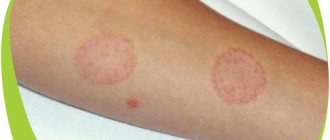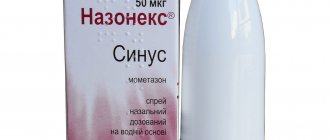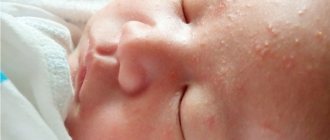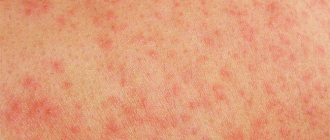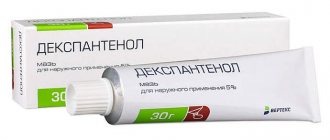Ringworm is a general name for a group of skin diseases that manifest as characteristic rashes that can be localized in different parts of the body.
Infections differ in pathogen, clinical manifestations, severity and treatment tactics. One of the fairly common types of lichen is Zhiber's pink lichen.
Zhiber's pityriasis rosea is an acute inflammatory dermatosis of unknown etiology that develops against a background of weakened immunity, for example, after an acute respiratory viral infection or influenza. Most often, the disease is diagnosed in adolescents and young adults, while it is rare in children and the elderly.
Doctors do not have a clear opinion about the causes of pityriasis rosea, but most dermatologists are inclined to believe that the causative agent of the infection is herpes virus types 6 and 7. The herpes virus remains in a latent state in the human body for a long time, but when the protective forces are weakened, it begins to actively develop and affects the upper layers of the skin with the formation of symptoms of pityriasis rosea.
What does pityriasis rosea look like?
The main symptom of lichen Zhiber is the appearance of a characteristic pink rash. First, a bright, slightly convex plaque with a diameter of 2 to 5 cm is formed on the body, the center of which may peel off slightly and differ in color from the edges. This is the so-called “maternal plaque”, next to which, after 5-10 days, small pink spots (up to 2 cm in diameter) appear along the skin tension lines (Langer’s lines).
“Daughter” rashes do not appear simultaneously, but throughout the entire illness. The rash is bright pink, peeling in the center. But after 4-5 weeks it begins to lose pigmentation, the plaques peel off without the formation of scar tissue or scars.
A number of patients may have atypical pityriasis rosea, in which the maternal plaque is absent and the body is covered with small pink spots.
Dermatologists also distinguish the following types of atypical Zhiber disease:
- urticarial - instead of pink plaques, blisters appear on the skin;
- vesicular - rashes consist of small blisters filled with clear or cloudy liquid;
- papular - cavity-free formations appear protruding above the surface of the skin.
The rash is most often localized on the torso, less often on the neck, face and limbs.
Varieties of pityriasis rosea
Experts identify several types of atypical pathology:
- with the absence of maternal plaque and localization of rashes on the facial and cervical areas;
- irritation that occurs due to friction, pressure or increased activity of the sweat glands, improper therapy.
Irritated lichen causes obsessive, severe itching. Vesicles, hemorrhages and pustules form on the patient's skin.
Individual forms of pityriasis rosea are distinguished by characteristic clinical manifestations:
- urticaria - determined by blisters on the skin;
- vesicular - expressed in the appearance of bubbles filled with liquid contents;
- papular - characterized by formations that rise above the surface of the dermis.
After the disappearance of the papules and recovery, some patients remain with marks in the form of pigmentation.
How is Zhiber's pityriasis rosea transmitted?
Zhiber's pityriasis rosea is not contagious - it is impossible to catch it from a sick person, even with close household contact: using shared dishes or towels. Therefore, patients do not need to quarantine or limit social contacts; they can continue to lead their normal lives during therapy.
Most dermatologists are inclined to believe that Zhiber's pityriasis rosea is caused by the herpes virus, which is present in the human body in a latent form.
Activation of the pathogen occurs against the background of decreased immunity, which can be caused by:
- hypothermia;
- recent injuries, surgeries and infections;
- overwork and stress;
- long-term exposure to adverse factors: for example, toxins at work;
- bad ecology;
- alcohol abuse;
- chronic diseases: diabetes, heart failure;
- hormonal fluctuations: for example, pregnancy in women;
- sudden climate change;
- smoking;
- unbalanced diet.
Most often, the virus is activated in the spring and autumn, during the season of influenza and ARVI epidemics. Vitamin deficiency, uncontrolled use of medications, and a course of antibiotics can contribute to the development of Zhiber's disease.
The causative agent of pityriasis rosea
Experts have still not been able to establish exactly what causes lichen Zhiber in humans. Some of them are inclined to herpes virus type 6 or 7, since they are detected in the early stages of the development of the disease. Other doctors talk about the infectious nature of roseola exfoliates, since in most people it appears after they have had a cold. Outbreaks occur in both middle-aged men and women, although they often occur in children over 10 years of age.
Do pityriasis rosea need to be treated?
Many patients mistakenly consider Zhiber's disease to be a harmless dermatosis that does not require therapy or contact a dermatologist. Despite the fact that the disease is prone to self-healing, improper treatment or its absence can lead to a long course of infection (up to six months or more) and various complications.
If a rash is detected on the body, it is recommended to make an appointment with a dermatologist or dermatovenerologist as soon as possible.
This is necessary to make an accurate diagnosis: pityriasis rosea can easily be confused with such dangerous diseases as:
- seborrheic eczema;
- psoriasis;
- parapsoriasis;
- mycosis of smooth skin.
For diagnosis, in addition to a general examination, a dermatologist prescribes a number of tests:
- general blood and urine analysis;
- skin scraping;
- serological study.
Based on the results, appropriate treatment is prescribed. The dermatologist develops a treatment regimen taking into account the individual characteristics of the patient’s body, the course of the disease, and the symptoms present. This allows you to select the most effective drugs that bring significant relief from the first use.
Why does pityriasis rosea recur?
Viral infections tend to recur. Lack of treatment for pityriasis rosea leads to the fact that the pathogen is not eliminated, and after some time (usually 4-6 weeks) it goes back into a latent form until a new weakening of the immune system. Because of this, many patients experience symptoms of Gibert's disease after each seasonal cold or severe stress.
The first manifestations of the disease are:
- formation of a large pink “mother plaque”
- mild itching of the skin;
- a feeling of tightness of the skin in the area of the rash.
Subsequently, “daughter” spots appear that do not go away within several months unless you consult a dermatologist. In some cases, patients may experience other signs of a viral infection: a slight increase in body temperature, weakness, and decreased performance.
To recover, it is necessary not only to eliminate the symptoms of pityriasis rosea, but to get rid of the cause that caused the disease, and also to destroy the pathogen. This requires complex therapy under the supervision of an experienced dermatologist.
Zhiber pink lichen: treatment and diagnosis in Kaluga
Despite the fairly accurate symptoms, a full diagnosis is still important. If a spot has formed that looks like lichen , which itches and itches, it is important to determine the type of lichen, as well as differentiate it from other diseases (for example, psoriasis, parapsoriasis, rubella). A dermatologist at our clinic will prescribe a full examination, which includes a number of tests, laboratory tests, and scraping examination. Treatment of pityriasis rosea in an adult is quite easy if the patient applies at the initial stage of the disease. After diagnosis, a treatment plan is prescribed, which must be strictly adhered to:
- multivitamins and immunomodulatory drugs to improve immunity;
- antihistamines to relieve itching and reduce redness;
- ointments to eliminate peeling;
- diet to reduce the allergenic factor.
It is also important to reduce stress. To do this, eliminate all factors that create or contribute to stressful situations. During the treatment period, physical activity and direct sunlight on the affected areas of the skin should be avoided. The disease goes away completely within six to nine weeks. The spots gradually lighten, itching and peeling disappear. For a short period after treatment, barely noticeable marks may remain on the skin: they gradually disappear completely.
We are always happy to help you and invite you to medical! Be beautiful! You can make an appointment by phone: 8 (4842) 27-72-50.
Is it possible to cure pityriasis rosea permanently?
Many patients, faced with a recurrent disease, are interested in whether it is possible to get rid of pityriasis rosea forever? It is possible if you consult a dermatologist. The doctor will not only select highly effective medications to eliminate rashes and itching, but will also develop preventive recommendations to prevent relapse.
Typically, the treatment regimen for pityriasis rosea includes the use of the following medications:
- local ointments with corticosteroids: act simultaneously on several levels - relieve skin tightness, promote rapid healing of the rash;
- antihistamines – eliminate itching;
- immunomodulators - activate natural defense mechanisms to combat pathogens.
Additionally, a dermatologist may prescribe treatment of rashes with antiseptic solutions to prevent secondary infection by bacteria, as well as emollient ointments for severe peeling.
Following medical recommendations will allow you to quickly recover and forget about Zhiber’s disease forever.
Useful tips for parents
should adhere to the following tips throughout the therapy :
- Spend less time with your baby in the open sun;
- replace synthetic clothes with cotton ones;
- forget about bath procedures for a while; you need to wash a sick child under a shower with running water;
- do not use a washcloth, so as not to further injure the skin;
- thoroughly wash and disinfect all soft toys of the sick person;
- The carpets in the apartment should also be treated;
- carry out wet cleaning with disinfectants daily;
- Ventilate your home regularly.
Even if a sick baby feels great, try to keep him busy with quiet games. During this period, it is better for the body not to sweat, so as not to increase the itching and burning of the affected areas.
Treatment of pink lichen of Zhiber in children, drugs:
How to cure pityriasis rosea during pregnancy?
Hormonal changes that occur in the body of a pregnant woman often provoke the development of various diseases, including pityriasis rosea. The disease is not dangerous for the fetus, but requires close attention, since it indicates a weakened immune system of the expectant mother and can cause significant discomfort.
The main rule that a pregnant woman should follow when treating pityriasis rosea is not to use any medications or ointments without first consulting a doctor. “Folk methods” can be no less dangerous for the fetus. Any impact on the body is allowed only after agreement with a dermatologist. The complex of drugs is selected by a specialist and may include ointments, vitamin preparations, and antiseptics.
It is also important for patients to follow the following recommendations:
- refuse to visit the bathhouse, sauna, swimming pool. Instead of a bath, you should take a shower without using a hard washcloth or rubbing with a towel;
- choose spacious linen made from natural fabrics. Synthetic materials interfere with the natural breathing of the skin, increase sweating, which leads to worsening the symptoms of pityriasis rosea and the appearance of new rashes;
- exclude foods that cause allergies from the diet: eggs, red berries and fruits, chocolate. It is also recommended to reduce the amount of fried, flour, smoked foods and replace them with boiled vegetables;
- Do not use cosmetics on damaged areas of the skin.
By following the doctor’s recommendations, the girl will quickly restore her health without negative effects during pregnancy.
What does pityriasis rosea look like when it goes away?
With proper treatment, pityriasis rosea goes away without the formation of scars. After exfoliation of the plaques, clean skin remains in their place, sometimes a lighter shade, but over time this defect disappears. However, in patients with atypical forms of Gibert's disease, the formation of difficult-to-heal ulcers is possible.
Self-medication and lack of qualified medical care increases the risk of complications:
- secondary infection of the rash with bacterial flora;
- the appearance of suppuration and ulcers;
- the formation of areas of hyperpigmentation after recovery.
To prevent such a development of the disease, at the first symptoms of pityriasis rosea, it is recommended to make an appointment with a dermatologist.
After recovery, the doctor will develop recommendations to prevent relapses.
They usually include a number of activities to strengthen the immune system:
- regular intake of vitamin complexes in the autumn-spring period;
- proper rest, especially during times of increased intellectual, physical or psycho-emotional stress (exams, important projects, other stress);
- rejection of bad habits;
- moderate physical activity;
- maintaining a balanced diet, with limited consumption of allergenic foods, as well as smoked, fatty, flour foods.
Following these tips allows you to maintain immunity, which suppresses the herpes virus and prevents the recurrence of pityriasis rosea.
Let's go to the doctor
Is it necessary to run to hospitals if pityriasis rosea goes away on its own after some time?
This disease is insidious and can return to become a long-term chronic process. Then the disease will cause irreparable harm to health.
Don’t take risks, but go to an appointment with a dermatologist - this doctor treats skin problems.
The first thing the doctor will do is carefully examine the spots using a special lamp and take a scraping from the affected area.
In some cases, to confirm the diagnosis, the doctor may give a referral for a blood test.
Why can't you scratch pityriasis rosea?
Zhiber's pityriasis rosea can occur without symptoms, including without skin irritation. But some patients suffer from itching in the area of the rash. As with other dermatoses, you should not scratch the site of infection.
Violation of this rule leads to:
- damage to the top layer of skin and the appearance of scratches;
- the risk of introducing bacterial flora into the plaque, which will cause inflammation and suppuration of the tissue;
- increase in the area of rashes.
To cope with itching and skin irritation, seek help from a dermatologist or dermatovenerologist. The doctor will select corticosteroid ointments to relieve inflammation and antihistamines to relieve itching and burning.
What it looks like in the photo, how it develops: stages of the disease
As soon as the pest microorganism enters the body, a violent allergic reaction develops. The immune system reacts to the appearance of a stranger with skin rashes.
The disease goes through the following stages:
- the surface layer of the epidermis becomes thinner, the blood vessels begin to show through, creating the effect of a pink spot. This area is called the "maternal plaque";
- after 2-3 days, peculiar dark-colored rims appear along the edges of the affected area, limiting the lesion;
- the epithelium in this area sloughs off, leaving behind a pale spot. The skin becomes flabby, feeling like tissue paper;
- after 5-6 days, the maternal plaque acquires a flesh-colored, familiar shade;
- then other (daughter) spots begin to appear in different parts of the body. They are smaller in size than the mother's, but the cycle of their formation and change is the same.
The spots go away on their own after 4-8 weeks , leaving no complications or consequences.
But the disease can return, especially if the body is weakened and there are chronic diseases. In this case, the disease torments a person for up to six months, either subsiding or intensifying.
Only with pityriasis rosea the appearance and development of spots occurs in strict sequence. The affected areas never merge and have clearly defined boundaries. This is the main distinguishing feature of the disease.
Pityriasis rosea does not cause any physical discomfort - there is no swelling, itching and burning are insignificant. The psycho-emotional state suffers due to the appearance of the skin.
Photo of pink lichen in children on the body:
Can pityriasis rosea be smeared with iodine or brilliant green?
Iodine and brilliant green are one of the most accessible and widely known antiseptic drugs for treating scratches and other superficial wounds. Many patients who are faced with pityriasis rosea “out of habit” use these remedies to treat the rash. But this approach does not give results.
The virus that causes pityriasis rosea is concentrated in the deep layers of the skin - iodine and brilliant green will not be able to eliminate the cause of the infection. In addition, both products dry out the skin greatly and can lead to additional chemical burns. As a result, the patient will only worsen the symptoms and delay recovery. Iodine and brilliant green should not be used to treat Gibert's disease.
Is it possible to treat pityriasis rosea with celandine?
Another popular “folk recipe” for treating lichen is using celandine. However, the juice of this plant (as well as a decoction from it) is also not able to penetrate into the deep layers of the skin, that is, it will not be able to cope with the causative agent of the disease.
Also, celandine does not help speed up the healing of the skin, but can lead to additional damage and inflammation. It should be remembered that the juice of this plant is poisonous, can cause burns, worsen general health and cause a number of side effects. Therefore, the use of celandine not only will not alleviate the patient’s condition, but may also aggravate it, increasing the risk of complications.
Is it possible to apply zinc ointment to pityriasis rosea?
Zinc ointment is a popular antiseptic with a softening effect. This remedy is indeed prescribed for the treatment of certain skin diseases, in particular eczema. But it is indicated for use in the treatment of rashes that produce exudate (that is, weeping ulcers), since it has a pronounced drying effect.
In the case of pityriasis rosea, there is no exudate; moreover, the plaque often flakes off and causes a feeling of tightness. The use of zinc ointment can intensify this unpleasant symptom. To improve the condition of the skin, you can use local preparations with a pronounced moisturizing effect. They often contain natural vegetable oils, as well as antiseptic components. But a dermatologist should select medications.
Can pityriasis rosea be treated with salicylic acid?
Salicylic acid, like salicylic alcohol, is another popular antiseptic. It disinfects the skin and fights a wide range of bacteria, viruses and fungi. But in the case of pink lichen, its use is ineffective: the virus is located in the deep layers of the skin.
Antiseptic agents in the treatment of Gibert's disease are used only to prevent the risk of secondary infection of the rash with bacterial flora, and not to combat the pathogen itself. But it is not recommended to use salicylic acid and alcohol for this purpose either: both substances dry and irritate the skin and increase peeling. The effect of using the product will be the opposite: the rash will take longer to heal, and after healing, marks with disturbed pigmentation may remain.
